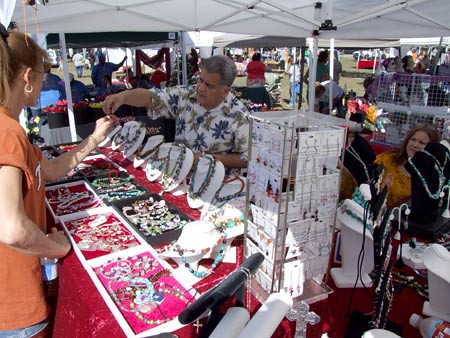Chamber of Commerce – To
Join or Not To Join
By Sean Claes
Working
with small businesses on marketing, the question often arises, “Should I join
the local Chamber of Commerce?”
My
answer always depends on the business I am speaking with. While putting this
article together I spoke with several business owners in the Kyle, Texas area
as well as the CEO of the Kyle Chamber of Commerce. I’ve included quotes from
them. Some asked to remain anonymous, so I honored their request.
There
is no one good answer to the question posed, but there are a few questions to
consider when making a recommendation. The questions deal with expectations and
time.
What do YOU expect out of
a Chamber of Commerce?
This first question to ask yourself is, why are you
interested in joining a Chamber of Commerce? Do you expect a lot of personal
promotion? Do you expect to gain business from the investment? Are you looking
for a voice with the city you’re in and would like to join a group of others
who have the ear of local, state and national government?
Kyle, Texas resident and owner of a Chick-Fil-A
franchise summed up a Chamber membership this way, “Joining the local chamber
of commerce shouldn't be evaluated as a revenue generating investment.
Membership in the chamber is about showing support for the local business
community. It's about service to a strong local economy and giving back.”
If your idea of a Chamber of Commerce membership is
to use it as a personal business promotional tool… that your payment to join
said chamber is akin to advertising dollars, you may be sorely disappointed. You
will likely get a big “welcome to the Chamber” message that is shared with its
members, maybe even on social media. If you have a storefront, you may even get
a bunch of Chamber representatives into your business one time for a ribbon
cutting (many chambers charge extra for this). After the ribbon is gone and the
e-mail/newsletter is sent, it’s up to YOU to convert those one-off touches into
customers.
One thing many don’t take into consideration is the
advocacy side of Chamber membership, and if you’re a struggling small
storefront business, this may not be on your radar. “The Chamber can quickly
respond to legislative and administrative actions that would directly affect
the interests of business in the region,” Kyle Chamber of Commerce CEO Julie
Snyder said.
What Are You Willing To
Put Into It?
When your check clears and you become a member of a
Chamber, your investment doesn’t end. It gains you entry into a network of
businesspeople and a collective mindshare. If your business isn’t able to take
advantage of this connection, a Chamber membership may not be for you. If you
are willing and able to put in time, donate product or become otherwise
involved in Chamber activities, your membership will usually be fruitful.
One local Kyle mom & pop storefront who doesn’t
have the time or manpower to be active in the local Chamber’s events offered
their opinion on membership. “We have figured out that the Chamber is not much
more than a paid for networking group.
If you go to events and talk to people, you can get business one on one
like that. If you can afford it, you can
sponsor events,” they said. “Other than that, it has not been of value to us.” They preferred to remain anonymous.
This is a view that seems to be shared by many
businesses that cannot take the time to be involved past their membership dues.
“If you like to socialize and attend "networking" events at a cost
beyond your regular membership fee, then this is for you,” another anonymous
Kyle businessperson said. “If you're lucky the website will draw new business
customers to you but you have to pay for any other kind of help.”
So, when thinking about joining a Chamber, think
about how you can be involved as a member. “When considering membership, be
looking for ways to give, whether it be time, talent or feedback, rather than
looking for what you'll receive,” Baragas said.
Do you have to join a
Chamber to be involved?
Events that the Chamber of Commerce hosts are
almost always open to the public. There are free evening networking events at
different businesses, breakfasts and lunches that are often hosted at a small
cost (may be a little more for “non-members” but available) and of course
there’s the big social to-dos. So, if you’re just looking for networking
through the chamber, perhaps you should try going to a few of these events.
Some business people find that attending these events are sufficient and they
can network just fine without being an “official” member of the Chamber.
So, Should You Join a
Chamber of Commerce?
That’s a big question, and it’s the question you
might want to ask when you join ANY group. If you’re considering it, do
yourself a favor and make an appointment with your local Chamber where you can
gain a better understanding of what YOUR Chamber of Commerce does for your
immediate area. Make sure your expectations line-up with the services they
provide before signing on to be a member.
And remember, each business is different and each
person will take their own experience from it.
The good:
“It has given us the opportunity to grow, not just
as a business but on an individual level,” Greg Devonshire, owner of Kyle’s
Milt’s Pit BBQ said. “It has provided us with resources to seek out
professional advice as well as given us a way to give back to other members
that may seek it.”
And bad:
“It may be different for others, but for us, who
cannot go to events and cannot afford to be sponsors, it has not been worth
it,” Anonymous.
It’s really up to you to make an informed decision.
About The Author:Sean Claes has worked with Mom and Pop shops, International Corporations and the Music Industry on their branding, marketing, events and communications for more than 15 years. This article is just a sample of the observations he's made over the course of that time. For more information or to see how he might be able to help grow your business, contact him at seanclaesATseanclaesDOTcom. For more small business marketing advice, please visit - http://seanclaesdotcom.blogspot.com/p/small-business-marketing.html





